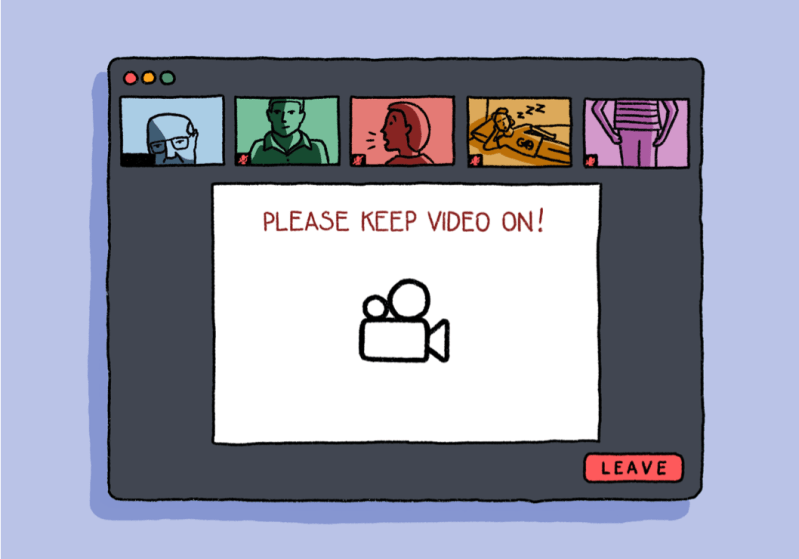Students panic and rush to message their friends as they receive the news from Provost Persis Drell and Associate Vice Provost of Environmental Health and Safety Russell Furr: “We are now planning to begin the quarter with two weeks of online instruction.”
Many students anticipate that a delayed start will hinder their ability to partake in activities, and many will be reminded of their experiences during winter quarter 2020. This change, independent of the logistical and safety precautions of the pandemic, will impact the nature of the evolving social interactions between Stanford students.
During the winter quarter 2020, many students impulsively packed their bags, booked flights, petitioned for no exams and didn’t even say goodbye to their friends.
Keeping in mind that Stanford is only “now planning” for this change, what are the impulsive decisions students make this time?
This year, some students are even considering staying home for longer.
There are many other voices as well.
The anxious ones:
“How do I form a p-set group during week two?”
“Should I take lab next quarter instead?”
“Do I even want to join this singing class if chances are classes will be virtual?”
Or the relaxed ones:
“Yes! I can sleep in.”
Despite these changing situations racing in the minds of many students, there is one fundamental concern: as COVID-19 continues to persist, how will this two-week virtual period factor into the evolution of Stanford’s social culture?
While the online start will make it difficult to create new friendships, it may also serve to strengthen existing bonds among students. However, there are elements of Stanford’s social and academic culture that have been lost (temporarily and permanently) during the virtual transition.
For example, LaIR, evening office hours for computer science (CS) courses located in Tressider Union, had been a place where students would anxiously sit in clusters to solve the p-set problems, impatiently waiting for a TA to come help. Now that it’s been moved online, the LaIR environment has temporarily lost its culture of hustle and bustle — a place known for CS alumni to reminisce about “the old days.” Though LaIR may be more convenient online, the atmosphere and culture of collective stress amongst students taking the same class has surrendered to laptop screens.
In the winter of 2020, I remember finding my closest friends in office hours during week two, working together on problem sets. Virtual office hours have changed this friendly dynamic. The tangible aspect of interacting with other students during an in-person office hour, which provided the collective comfort of struggling together, has been lost. The substitute of Zooming with people awkwardly staring at one another, afraid to interrupt, creates a barrier to naturally making friends. The design of Zoom, intended to have voices heard by all at once, prevents one-on-one conversation, which is an important and significant part of in-person office hours.
As virtual classes become increasingly normal, students may gradually understate the importance of developing friendships within courses and office hours. Students, now given the option to have office hours online, may prefer this efficient way of seeking help. However, this transition may eventually cause a series of changes in their social development. Perhaps that person on Zoom, with their camera turned off and microphone muted, could have been your best friend.
After speaking with students from multiple class years, there has been an observable difference in who these students prioritize in their social life. Though the ability to create new and broader friendships diminishes through the use of virtual platforms, not all social implications are negative.
I asked one of my close sophomore friends who had taken their classes online during their freshman year about how many people he had virtually met. He told me that he made six close friends — through one class. I realized that I had made so many more by being in-person and immediately felt sorry he had spent a year online.
But he continued to explain how his group of friends were already planning spring break and Thanksgiving trips. In fact, they seemed to do everything together — from asking each other for p-set help on classes that they hadn’t even taken yet, to cooking weekly meals (when back on campus). In addition, they had the opportunity to live off campus as a group, creating additional bonds in ways that only programs such as SPOT would permit. That’s when I realized they had formed a web of reliability.
My freshman experience focused on developing strong relationships in a more linear form, in which I was constantly meeting new people from different courses. Though I was able to learn about each friend’s background and story, it required an additional shared experience to develop the depth of friendship that my friend had mentioned, such as joining another club together or getting off campus on a trip to San Francisco.
The serendipity of simply bumping into someone in lecture sprouts seeds of friendship — whether a student wants it or not. The major difference between our forms of socializing were dependent on the platform of interaction. Consequently, I had achieved a diverse breadth of friendships, whereas my friend had spent his time establishing depth with the group he had formed online.
And there’s so much to be said for these chance interactions; it’s certainly something I missed deeply in quarantine. However, the way we have been conditioned and designed to interact on campus contributes to the social pressure of having to divide one’s attention to maintain relationships on campus, and likely factors into the “flaky” Stanford culture that we continue to witness. Regardless of the ways we choose to socialize, establishing such a network of friendships has its costs and benefits.
Perhaps these two virtual weeks will remind us to focus on deepening the friendships we already have, to stop stretching ourselves thin and to appreciate the people that are already in our lives.
And maybe that’s precisely what we need.
